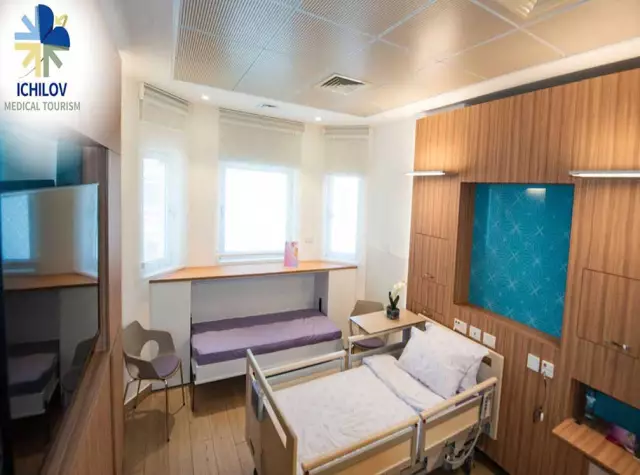- Author Rachel Wainwright [email protected].
- Public 2023-12-15 07:39.
- Last modified 2025-11-02 20:14.
What you need to know about the postoperative bandage
The recovery period after any surgical intervention requires an extremely careful attitude to his health from the patient. But what to do if you urgently need to return to your usual life, and doctors, in most cases, do not allow you to spend a lot of time lying down. Of course, if we are not talking about cases where serious injuries do not allow you to move. This is due to the fact that after abdominal operations, adhesive processes may begin, therefore, doctors recommend that the patient begin to walk a little as early as possible. To reduce pain, fix this place, prevent suture divergence - a postoperative bandage is used. Depending on the area for which it is intended, the product can be in the form of a lumbar corset, a boot on the leg, a scarf bandage, an orthosis on the shoulder, wrist and other joints. Each of them has its own design features, which you should familiarize yourself with.

Bandage after abdominal surgery
The postoperative bandage is a wide elastic belt that is wrapped around the waist and is usually fastened with Velcro. It may have additional tightenings. Thanks to this multi-stage adjustment, the band can be better adapted to your parameters. The inner part, adjacent to the belly, often has a special soft covering made of natural breathable material. Some models have special rigid ribs in the lumbar region to relieve stress. For ostomy patients, special bands have been developed to remove intestinal contents. Most often, abdominal belts are prescribed after cesarean section, hysterectomy (removal of the uterus), gastrectomy, removal of hernias, after liposuction, etc. Some do not understand why such a corset is needed, but in fact it performs many functions. The main ones are:
- prevention of divergence of postoperative sutures;
- protection against the ingress of infections, microbes;
- fixing the internal organs in the correct position, preventing their displacement;
- reducing the risk of developing incisional hernias;
- relieving muscle tension;
- acceleration of suture healing;
- decrease in pain;
- elimination of edema, hematomas.
Before buying, you should consult your doctor, since not in all cases they are necessary. In particular, after surgery to remove appendicitis, a regular dressing is often sufficient. There are also a number of contraindications. These include some chronic diseases, accompanied by swelling, as well as a poor condition of the seam (bleeding, suppuration, etc.). Contraindications may include irritation, ulcers and other damage to the skin at the site of application of the bandage.
How to wear a medical postoperative belt depends on the doctor's prescription and the speed of the suture healing. Usually duration up to 2 weeks, daily maximum 8 hours with breaks during the day.
Leg bandage
If a person has undergone surgery on his leg, then the most difficult thing is to start moving around and step on the affected limb. For such purposes, conventional elastic bandages are not enough, so manufacturers develop special models. In particular, a pneumatic orthopedic boot, in which the pressure inside the product is regulated. The principle of operation of this orthosis is based on air cells. This ensures all-round contact with the lower leg, and with each step there is a pulsating pneumatic graduated compression. This technology helps to reduce puffiness. Shock absorption and dissipation also occurs. The boot provides the necessary immobilization while still allowing walking. This type includes the AIRSELECT 01EF STANDARD and AIRSELECT 01EP ELITE models of the American company DonJoy.
After surgeries, a two-piece thermoplastic ankle brace with an inner cushion made of memory foam is often used - model VALTEC EST-085 Orliman. The structure consists of two plates covered from the inside with a soft polymer material. The straps on the shin and under the heel are used for fixation to stabilize the ankle. How to choose the right model will be determined by the doctor, depending on the type of operation performed.
Bandage after hand surgery
The design of the braces on the shoulder joint is a sleeve (sleeve), which is attached to the body with special belts. Thanks to the shoulder bandage, the range of motion is limited, displacement, hypothermia in the joints is prevented, the regeneration of tissues, muscles, bones after operations is accelerated.
Sometimes, after the operation, a model with an elastic, lightweight splint cushion (model RP-6U-45 Reabilitemd) is required. Thanks to the design, it takes the hand to the side, fixing it at the desired angle - 45 ° or 90 °.
Depending on the operation, a neoprene model that fits snugly and creates thermal compression in the shoulder joint may be sufficient. It has an additional strap that fastens from the opposite part of the body, which prevents the diseased limb from making unnecessary movements (model 4801/4802 Orliman).
Postoperative bandage on the wrist joint
Our hands are constantly at work, making a lot of movements every minute, but after the operation this is fraught with dangerous consequences. A brace with a metal simulated splint, which can be individually adjusted to the bend of the arm, will help to limit the mobility in the wrist joint. The most common formable support is made of aluminum and is hemispherical. These orthoses are made of a dense material that provides moderate compression. The best reviews were given to the following models: MF-50 and MFP-80 (extended) Orliman, ARH9019 and ARH16 ARMOR, as well as Tutor-6K-B Reabilimed and 8551Med textile. If you also want to fix the finger in a fixed position, then a bandage with a metal rib is used, in particular, the ARH15 ARMOR and Tutor-6K-VU Reabilitimed models.

Bandage after knee surgery
In case of serious injuries and diseases in the knee joint, unfortunately, operations are sometimes indispensable. To quickly return to an active life, you need to competently approach the choice of a bandage. You may have to buy a splint for the first time. It is a bandage from the lower leg to the middle of the thigh, equipped with several metal plates running along the leg along its entire circumference. This ensures complete immobilization. An alternative to the splint can be a metal brace with hinges and a lock. At the beginning of rehabilitation, you can fix the leg in the desired position, then gradually adjust it, expanding the range of motion to develop the limb. Occasionally, a doctor may approve of a neoprene bandage that provides gentle compression and a micromassage effect to improve circulation and speed up healing.
You cannot buy a bandage at your own discretion, since, as can be seen from the descriptions, their designs are different. It is very important to consult a doctor, and illiterate self-medication can cause postoperative complications.
Found a mistake in the text? Select it and press Ctrl + Enter.






